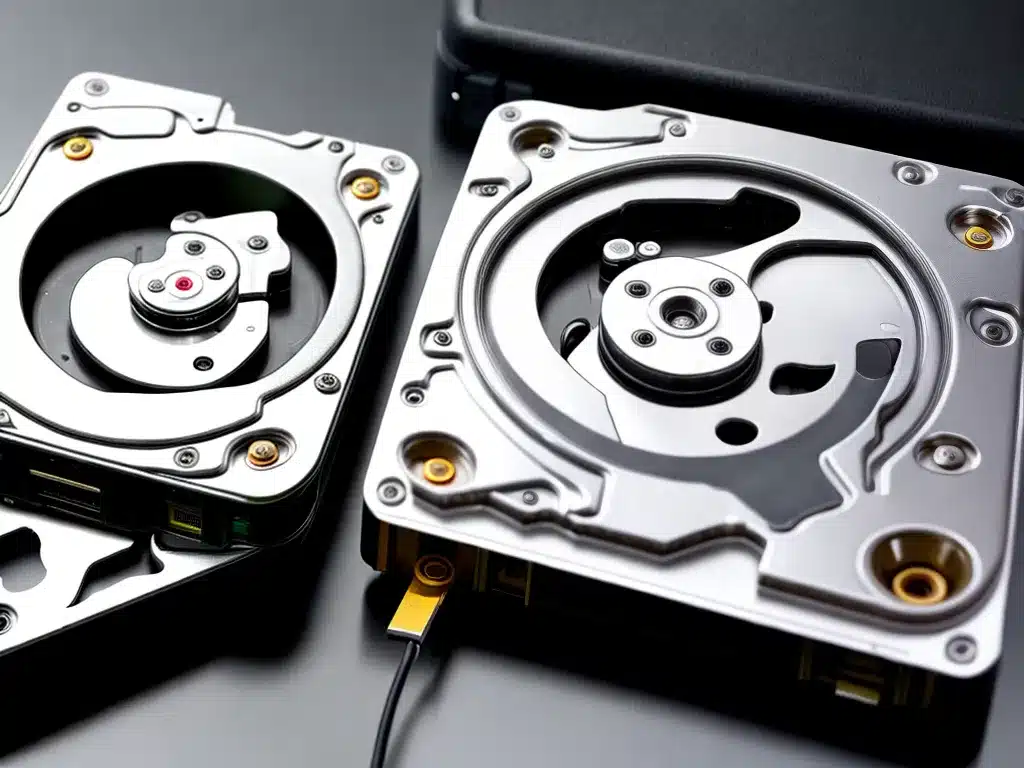
If you have an external hard drive or USB flash drive with a damaged port that is preventing you from accessing the data, there are several methods you can try to recover the data. With some effort, patience and the right tools, you can often get the data off the drive.
Assess The Damage
The first step is to assess the physical damage to the port. Some key things to check:
-
Is the port just loose or is it completely broken? A loose port may just need to be tightened. A broken port will require more effort to recover the data.
-
What type of port is damaged – USB, Thunderbolt, eSATA, etc? The port type will determine what type of adapters you may need.
-
Are any pins visibly bent or broken in the port? Severe pin damage can make data recovery very difficult.
-
Does the drive power on and spin up normally when plugged in, even if the computer doesn’t recognize it? This indicates the damage is likely just the port/connection.
-
Does the drive make any unusual clicking or beeping noises when plugged in? This could signal a mechanical failure making data recovery tricky.
Carefully inspecting the physical port damage helps determine the likelihood of DIY data recovery vs requiring professional data recovery services.
Try A Different Port Or Cable
If the drive powers on normally but your computer just isn’t recognizing it, the easiest solution is to just try a different port and cable:
-
Try connecting the drive to different USB ports on your computer. The port may just need reseating.
-
Try using a different USB cable if possible. Cables can sometimes fail.
-
Try connecting the drive to a different computer entirely. This helps rule out any issues with the original PC.
-
For external drives with interchangeable cables, swap the damaged USB cable for one with a healthy port. Then connect the healthy port to your PC.
-
For drives with non-removable cables, use a USB-to-SATA adapter to bypass the damaged port and connect directly to the SATA port on the drive.
Sometimes the port itself is fine, and a simple cable swap or change of ports allows access to retrieve the data.
Open The External Enclosure
If the physical port is clearly damaged or connecting to a different port/cable doesn’t work, the next step is to open up the external enclosure:
-
Use a small Phillips screwdriver to remove the screws and carefully open the enclosure. This exposes the internal hard drive.
-
Be very careful not to damage or touch any exposed circuit boards once the enclosure is open.
-
If there are any warranty stickers on the enclosure, removing them could void your warranty for a replacement. However, data recovery should take priority.
With the enclosure open, you now have direct access to the SATA port on the hard drive itself. This allows you to try connecting the bare drive to your computer.
Connect The Bare Drive
There are a couple options for connecting the now-exposed internal hard drive to your computer:
-
Use a SATA to USB adapter – This allows you to plug the SATA connector on the hard drive directly into the adapter, and then connect the adapter to your PC via USB. The drive should then appear on your computer as if connected externally.
-
Connect the drive internally – You can open up your desktop PC and connect the bare drive directly to an internal SATA port on your motherboard. This bypasses any external port damage.
-
Install in an external dock – Hard drive docking stations allow you to insert the bare SATA drive and connect it over USB. This essentially turns it back into an external drive.
Once connected via one of these methods, you can attempt to access the drive normally and retrieve your important data. Just be sure to avoid any mechanical damage when handling the exposed drive.
Try A Recovery Software
If you still can’t access the drive even when the physical SATA connection is intact, the file system itself may be corrupted or damaged. In this scenario, data recovery software gives you the best chance of retrieving your files:
-
Run recovery software – Programs like Ontrack EasyRecovery can scan drives for lost and damaged partitions and files. This may allow recovery of data even if the file system won’t open normally.
-
Repair filesystem errors – Software like Disk Drill have utilities to repair major filesystem issues such as Master Boot Record (MBR) corruption. This may fix drive errors and make data readable again.
-
Bypass filesystem entirely – As a last resort, advanced data recovery programs can scan drives sector-by-sector and extract data directly off the disk platters, bypassing the filesystem entirely.
Just be sure to use read-only recovery tools that won’t damage the drive further. Saving recovered data to a different healthy drive is also advisable.
Seek Professional Data Recovery
If DIY recovery efforts all fail, then professional data recovery is the last option to retrieve the data. A reputable recovery lab can dismantle the drive in a dust-free cleanroom and repair or bypass any physical damage to access the drive platters directly. This gives the highest chance of getting your data back. Just be prepared that professional services can cost hundreds or thousands of dollars.
In summary, options like trying different connections, swapping cables, removing the enclosure, using data recovery software, and ultimately professional recovery services can all potentially help get your important files off an external drive with a damaged port. Don’t give up hope if one method fails – simply move on to the next strategy. With persistence, there’s a good chance of recovering your precious data.












